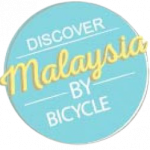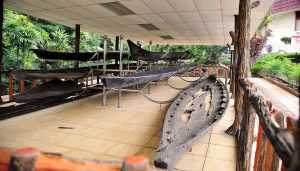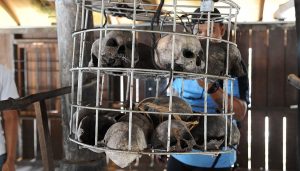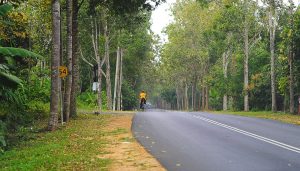Pulau Langkawi, officially known as Jewel of Kedah, is an archipelago of 99 islands in the Andaman Sea, off the mainland coast of northwestern Malaysia. It has a population of some 64,792, the only other inhabited island nearby Pulau Tuba. Langkawi is also an administrative district with the town of Kuah as the largest town. Surrounded by clear waters and filled with jungles and paddy fields, the island is a popular choice among tourists who are looking for some windblown beach getaway.
Granted with a World Geopark status by UNESCO in 2007, Langkawi is a duty-free island that holds many attractions such as Underwater World, diving activities, cable car rides and a popular beach drive, Pantai Cenang, where we started our Classic Cycling tour.

Pantai Cenang
Known as Malaysia’s most developed beach on the west coast, 1. Pantai Cenang does not only have white sandy shores shaded by big palm trees for ultimate relaxation, there are also numerous restaurants, shops and hotels along the beach to delight yourself with some urbanity.
During the tour, we were given classic bicycles to go whole hog with the old-world theme of the ride. The bicycles seemed wobbly for their size, suggesting nostalgia of the antique, but riding on it, we were proved wrong. Not only were we equipped with these sturdy fixed-gear old bicycles, but we also wore rice hats, also known as the conical Asian hat, to complete the vintage package. These cone-shaped hats are popular among South East Asian farmers and paddy field workers to protect them from the sun and rain.
Langkawi, as it is most known to people, is a top commercial tourist destination. But in this tour, we explored sites, its back roads, which are not yet known to everyone—bare beauty in its unripeness.
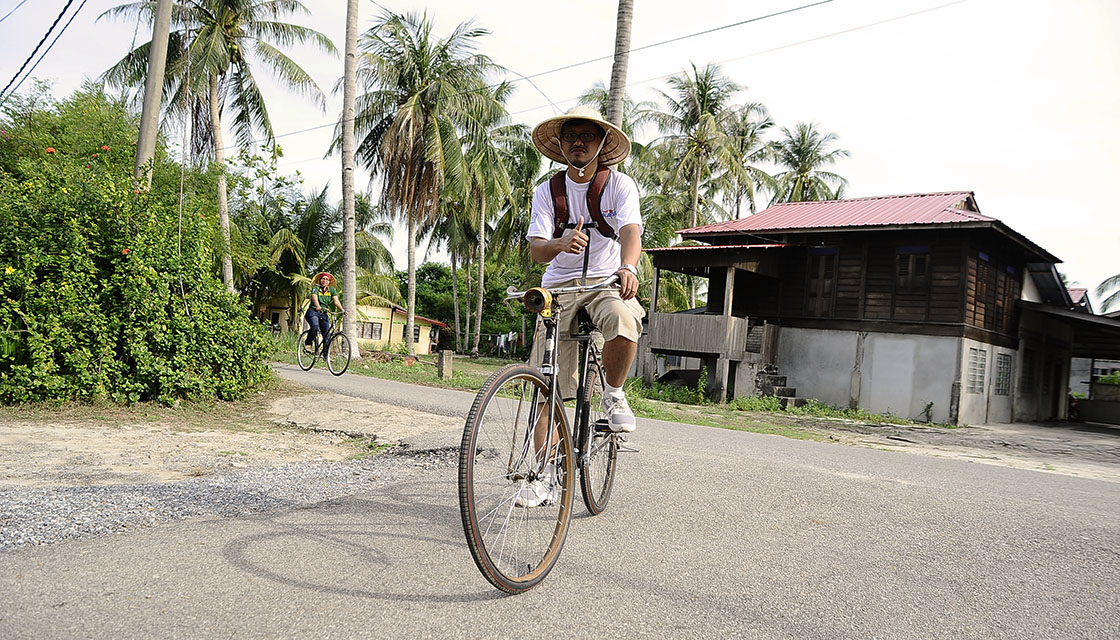
Kampung Lubok Buaya
Feeling like farmers on wheels, we set off the tour and onto the small country roads leading towards 2. Kampung Lubok Buaya, a traditional village filled with fruit trees and paddy fields. Although Langkawi is filled with exotic spas, restaurants, five-star hotels and other luxurious attractions, it has managed to strike a balance between countryside and city living, as the locals still live their simple lifestyle the way they have for generations. Most of the locals have their own farms and plantations sprawling with all kinds of local fruits. They are friendly enough to allow visitors to pluck the fruits from their trees, especially if you seek permission.
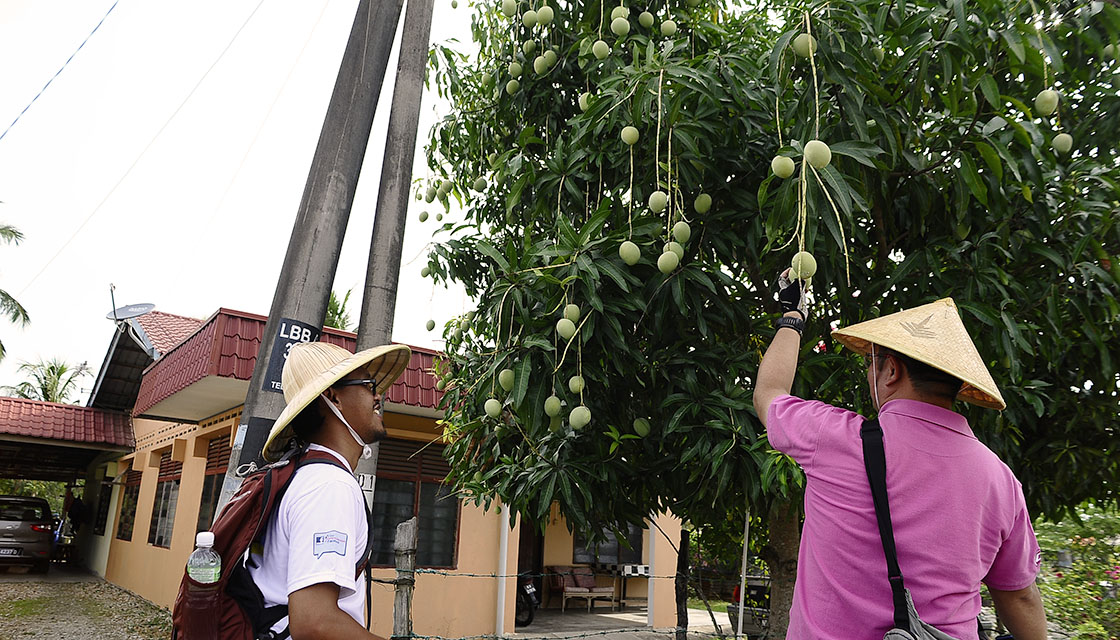
Mangoes
True enough, passing by luscious trees bursting with unripe mangoes, we almost grabbed a few for some munchies, despite knowing its taste with a kick. 3. Mangoes are easy to grow in Malaysia due to its tropical climate. Although the delicious, sweet-tasting fruit can be eaten on its own, it is used as a condiment to cooking stir-fries, also sliced in desserts, blended into smoothies, and made into preserves.
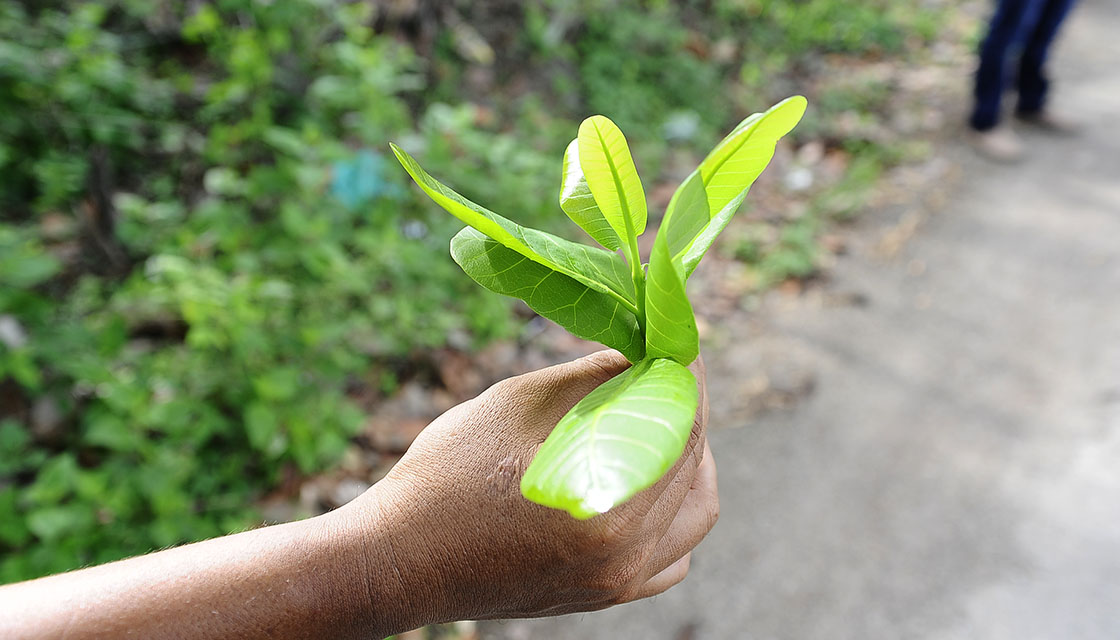
Cashewnut Leaf
We continued on our journey, passing by traditional wooden houses and an array of foliage. Talk about the fresh smell of greens! Interestingly on the way, we also saw many cashewnut trees. Besides consuming cashew nuts as a snack and condiment in many dishes, locals also eat the 4. Cashewnut leaf in the form of a raw salad, called ulam in Malay. The leaves are picked when they are very young—its sweet aroma and taste enjoyed as an accompaniment to rice or eaten with sambal belacan (shrimp paste).
Further through the narrow country roads, we have observed the simple village lifestyle led by the locals, and there was also that sense of peace in such a place that is immersed in the natural world.

Buah Cermai
One of the fruit trees the place is famous for is the 5. Buah Cermai (Malay gooseberry) tree. The small yellow-green fruits are easy to peel and have a mild, refreshing flavor, so we stopped for a break to delight in its juicy taste at a kind local’s farm.
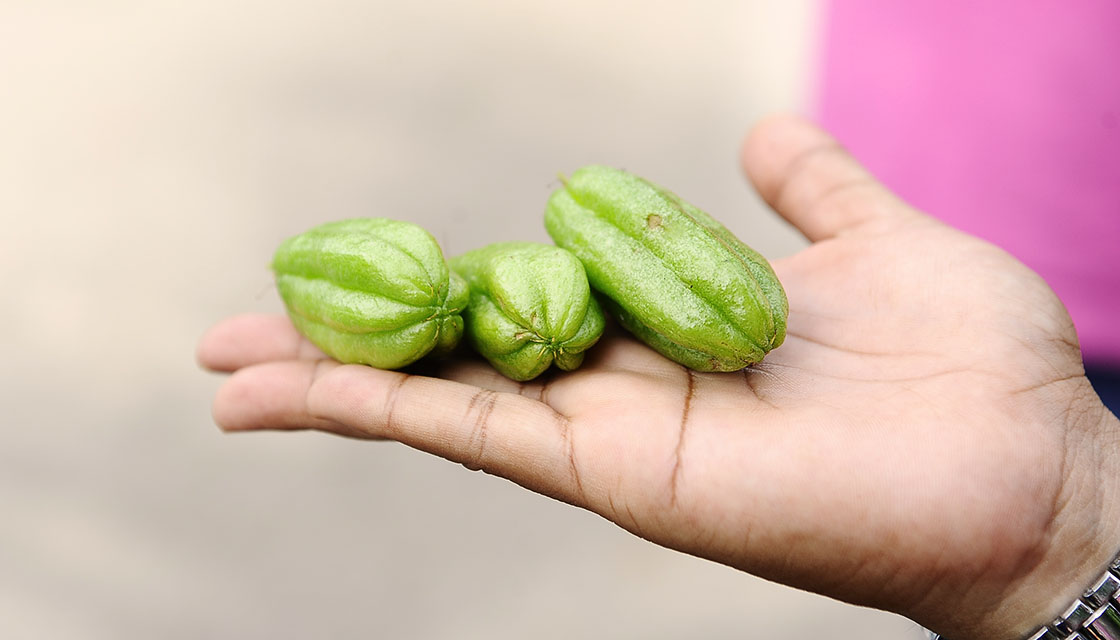
Star Fruit/em>

Buah Sentul
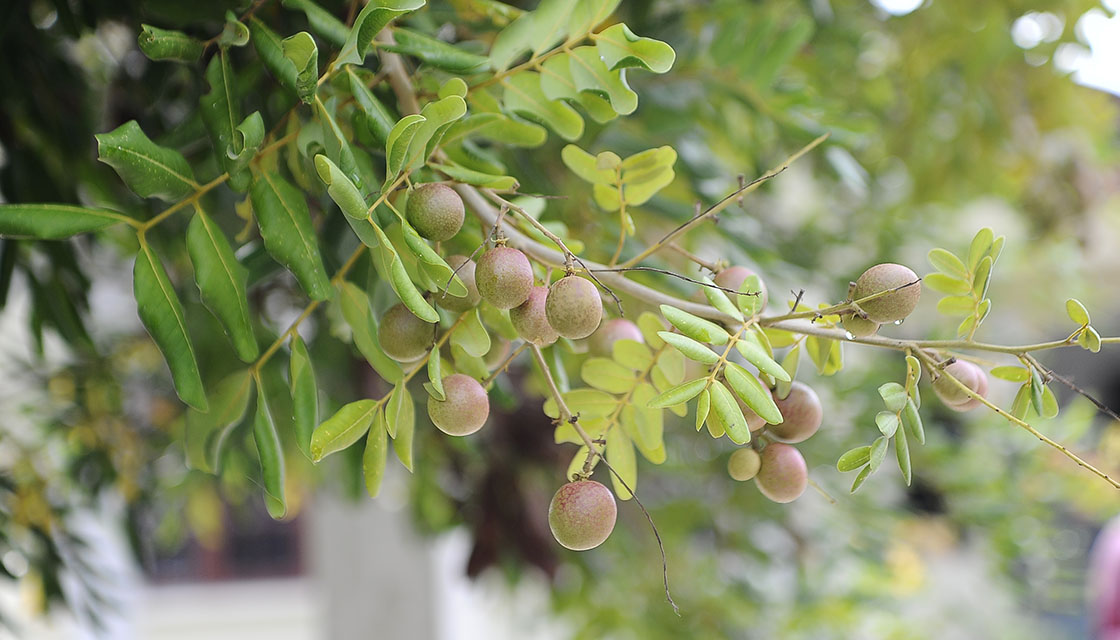
Mata Kucing
There were also starfruit and santol trees. 6. Star Fruits are yellow, crunchy and juicy fruits that are popular in South East Asia. However a lesser known version of the star fruit, which is greener and smaller, is traditionally used in cooking here in Pulau Langkawi. While santol, commonly known as 7. Buah Sentul, has a unique sweet-sour taste and grows abundantly in Langkawi, that anyone can easily pick as many as they want from one of its too many growing trees. Another interesting fruit worth sampling is 8. Mata Kucing, literally known as Cat’s Eye. Although Mata Kucing looks and tastes almost like Longan, also known as Dragon Eye, they are not to be confused as the same.
We didn’t know that sampling a lot of these local fruits can be thirst-quenching, and we had enough to keep it going. Though, to be honest, there’s no getting enough of that sweet, succulent taste.
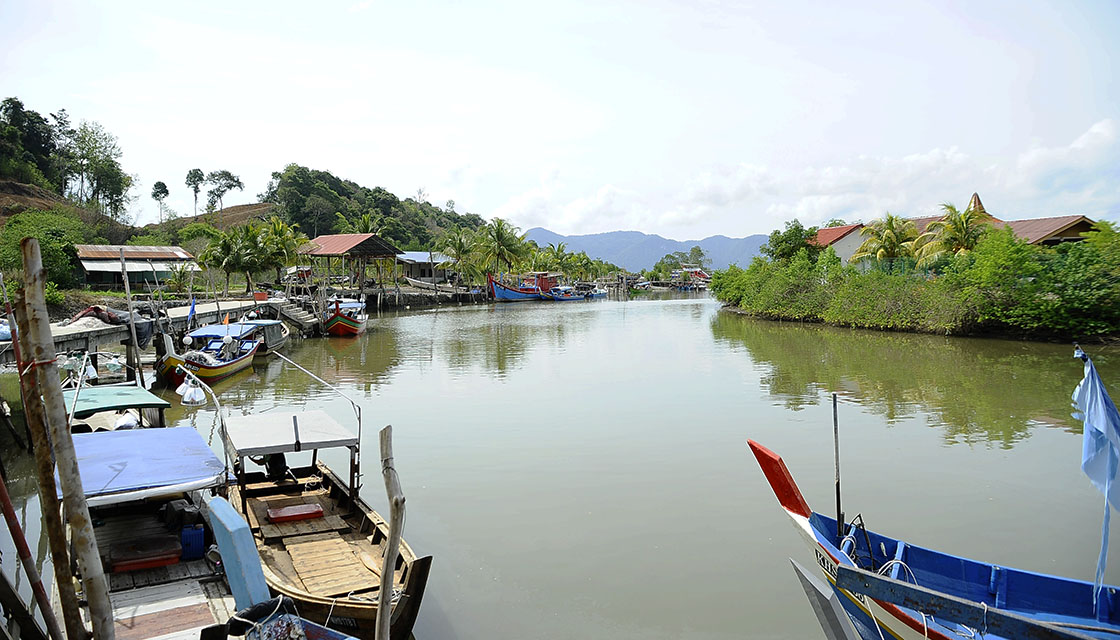
Jetty Temonyong
We crossed the main road to another quaint fishing village. Here, the trail was rougher and mostly unpaved. The dirt road demanded for some heavier pedaling, but the backdrop of green rolling hills from a distance kept us by. The trail brought us along a small river leading to 9. Jetty Temonyong. This is where local fishermen unload their catch, as the river connects to the sea. It was a rare experience for us city dwellers to witness how locals live out their days—a simple life well-lived—utilizing water and natural resources. During our short rest in the area, we also met a family going on a 3-day fishing trip, and we learned that it is, apparently, a popular activity among locals and tourists.
We were beginning to feel hungry and thirsty from the afternoon heat when we were there, and thankfully we got reminded that Hi-Tea was included in the package, so we cycled back to Pantai Cenang and delighted in a delicious local BBQ meal. Fish, chicken and other meat were marinated and cooked over a charcoal grill, then laid out buffet-style on long tables accompanied by rice and other vegetable dishes. These comprised the feast we devoured to rejoice our arduous yet fun-filled trip.
Our total trip took us 2 hours 40 minutes, covering a distance of 9.13km. We felt renewed after seeing what Langkawi’s country roads have to offer, apart from its center’s attractive commercial zones. Now, we just added more reasons to our list why Langkawi is a favourite holiday destination.

Cycling Route – Classic Cycling Tour, Langkawi
This cycling tour package is provided by: Honeyzone Travel & Tours Sdn Bhd
No. 2 Melati Tanjung Walk, Pantai Cenang, 07000 Langkawi, Kedah, Malaysia. Tel: +60 (4) 955-7732
